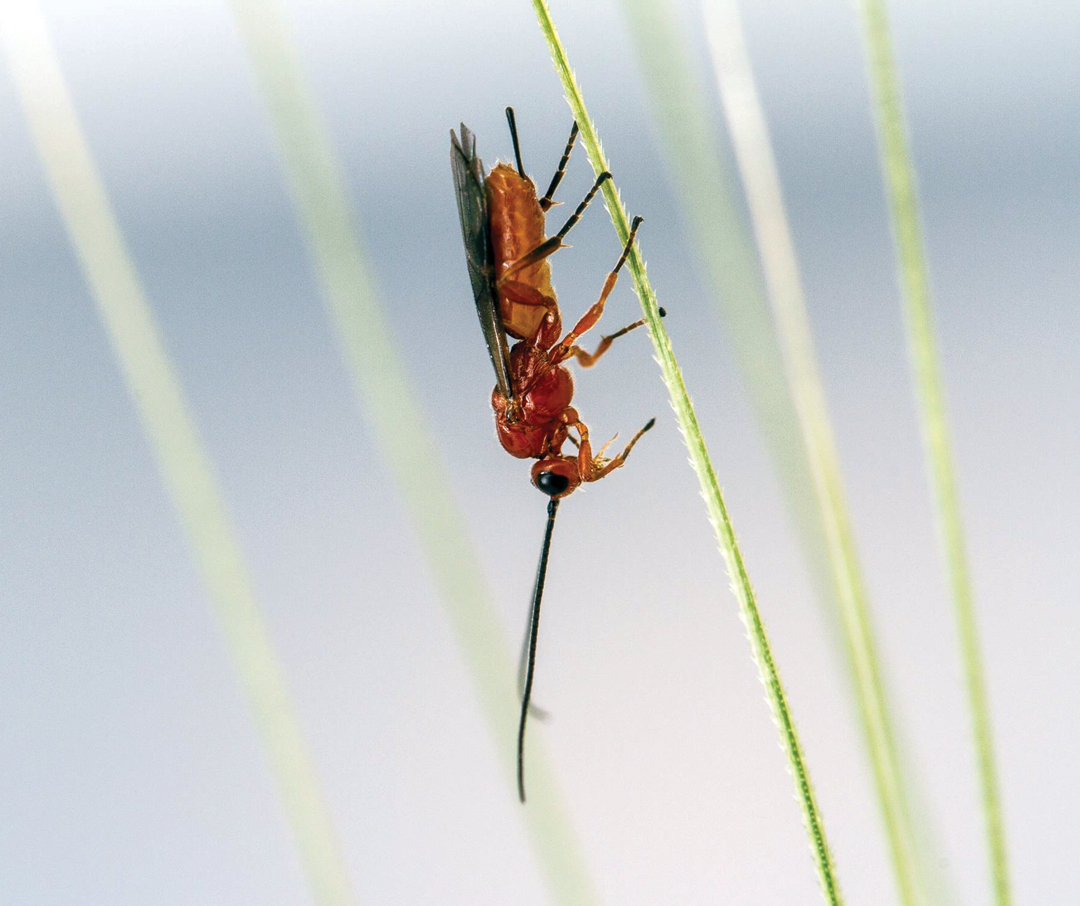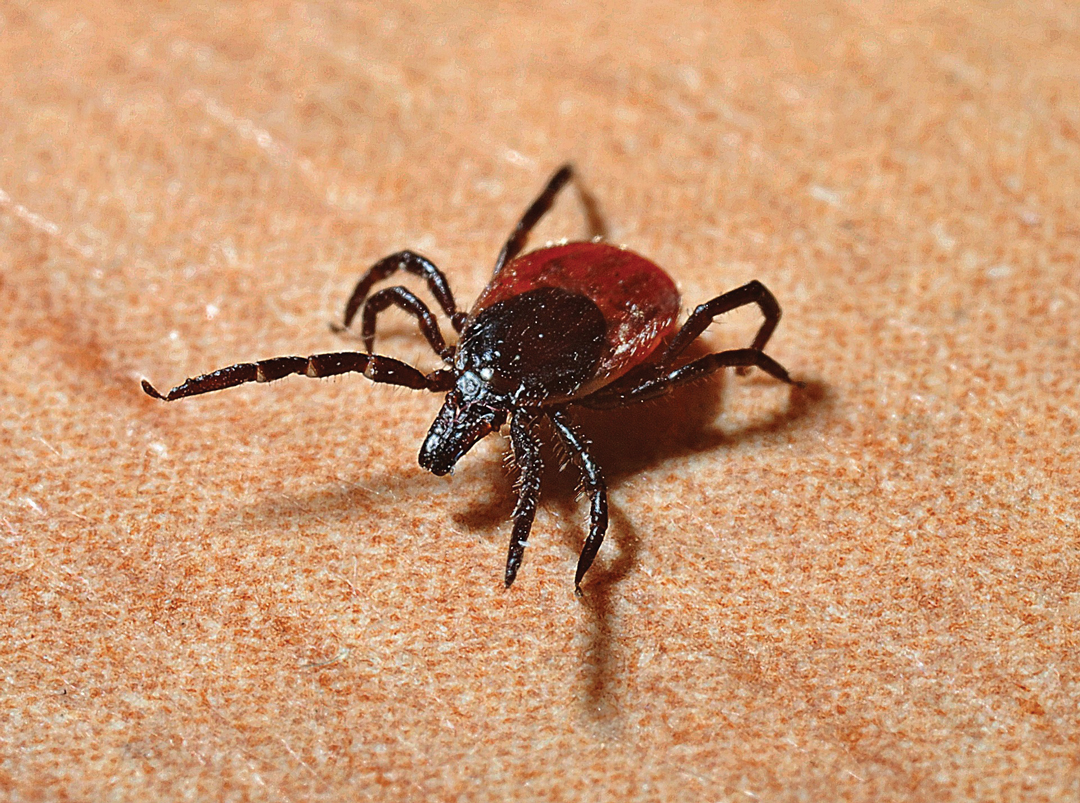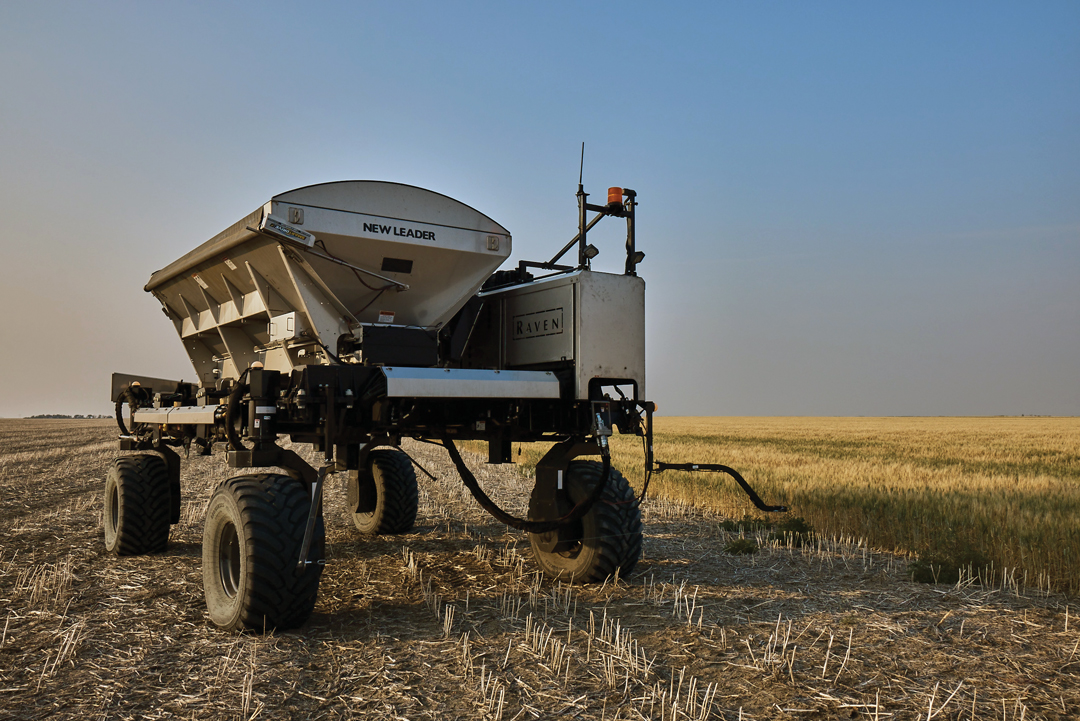A RACE AGAINST TIME
BY EMILY R. JOHNSON • PHOTO COURTESY OF SHELLEY BARKLEY
CWRS farmers in widespread pockets of the western Prairies have experienced increased wheat stem sawfly populations in recent years. Researchers and agronomists are concerned the pest may become increasingly prevalent if drought conditions continue. “It was a race against time to provide farmers with a variety to respond to wheat stem sawfly as soon as possible,” said Richard Cuthbert, a wheat breeder with Agriculture and Agri-Food Canada’s (AAFC) Swift Current Research and Development Centre.
Over the past decade, AAFC Swift Current worked to better identify the genetics involved in the production of solid stem characteristics. This helped Cuthbert and his team produce a promising new CWRS variety that was supported for registration at the Prairie Grain Development Committee’s (PGDC) annual meeting in February.
The new variety was bred from AAC Concord and AAC Alida, varieties previously developed by Cuthbert. For the day, it had leading agronomic traits, but Concord, which was supported for registration in 2014, was moved to CNHR as CWRS standards were tightened under wheat class modernization. AAC Alida was supported for registration in 2017. Relative to the check variety, it has improved yield and FHB resistance. It is also tolerant to orange wheat blossom midge based on the Sm1 gene. Cuthbert crossed the two varieties in 2017, and further selections resulted in improved end-use quality traits that met CWRS standards. BW5104, dubbed AAC Oakman, is the first CWRS variety to have a solid stem—almost completely solid pith—that gives it resistance to sawfly damage.
“The bulk of the work was done in four years, which is very, very quick,” said Cuthbert. The development of pure breeding lines required to achieve this was assisted by technological tools such as marker assisted breeding.
In 2023, AAFC took a risk and invested significant dollars to expedite the production of foundation seed. Without having yet been registered, seed was sent to a contra season nursery in New Zealand. In the ideal growing environment of the Canterbury Plains on New Zealand’s South Island, Oakman yielded 96 to 97 bushels per acre. In total, 42 tonnes of seed were shipped back to Canada and distributed through SeCan to western Canadian farmers for registered production this past spring.
This step effectively removed one to two calendar years from the variety development timeline. It will ensure millions of dollars of wheat production are not lost to sawfly, said Cuthbert.
In addition to sawfly resistance, Oakman’s total agronomic credentials are impressive. “It has an excellent disease package,” said Cuthbert. “It has strong resistance to stripe rust, stem rust, leaf rust and common bunt and very strong straw as a taller, semi-dwarf variety, which is typically favoured by farmers in a drought.” AAC Alida also contributed midge tolerance. Importantly, Oakman’s end-use qualities are desirable. These include high flour extraction and high falling number.
This new variety holds a lot of value for farmers in areas with dense sawfly populations, said Jeremy Boychyn, Alberta Grains director of research and director of agronomy and extension. “The semi-solid stem varieties available don’t have the ability to manage the pressure of wheat stem sawfly populations we are seeing,” he added. “Oakman offers farmers a solution to help manage wheat stem sawfly damage in addition to following best management practices such as crop rotation, harvest management and preseed residue management.”







Comments